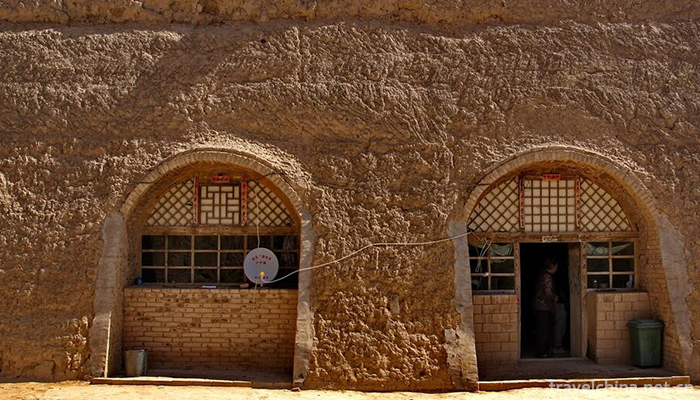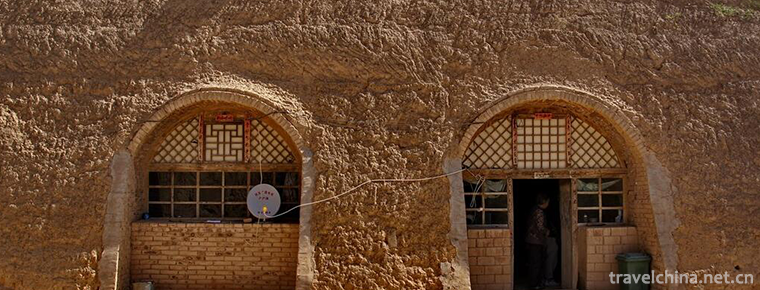Cave Building Techniques
Cave Building Techniques
Cave dwelling is an ancient dwelling form of residents on the Loess Plateau in Northwest China. The history of cave dwelling can be traced back to more than 4,000 years ago. The Chinese people creatively used the favorable terrain of the plateau to dig holes and live in them, creating a cave building called a green building.
Cave Building Techniques
Cave dwelling is a unique form of dwelling on the Loess Plateau. It is a relic of the development and evolution of early human cave dwelling. It is widely distributed in Shanxi, Shaanxi, Gansu and other places. The cave is generally one or two hundred meters long, and it is extremely difficult to seep water. The loess with strong upright character provides good natural conditions for the cave. At the same time, the physical and geographical conditions, such as dry and less rain, cold winter and less trees, also provide an opportunity for the development and continuation of economic and practical cave construction techniques without wood. Under the influence of different natural environment, geomorphological characteristics and local customs, caves have formed various styles.
Cliff-type cave
There are many kinds of caves. According to the layout and structure of the buildings, there are mainly Mingzhuang kiln, earth pit kiln, independent cave, cliff-side cave, sinking cave and so on. Cave building skills are rich and varied, such as flat-top cave is built with adobe or masonry on flat ground. The cliff-type cave is excavated on the plane after a side of the hillside is leveled vertically. The patio cave is more exquisite. Generally, it first digs a hole on the flat ground, about seven meters deep, square around, and then digs under the four walls of the pit to form a patio-like quadrangular house.
Sinking cave
The caves in Pinglu County, Shanxi Province, are called "underground cave yard", "underground cave yard", "Tianjing cave yard", "sunken cave yard" and so on. They can be divided into residential kiln, storage kiln, livestock kiln, Maotai toilet kiln and door cave kiln according to their different uses. Their construction techniques have a history of more than 4000 years. "See trees, see villages, see houses, cave dwelling in the soil, courtyard underground hiding." This folk song makes a vivid description of the characteristics of the construction of cellar yard.
Inside the cave
Cave building is beautiful and durable, warm in winter and cool in summer, comfortable and quiet. It can save land, protect vegetation, and economically save labor. It is a perfect form of building adapted to local conditions. In the era of agricultural civilization, the history of architecture, social life and related folklore and culture in Northwest China, cave building technology has irreplaceable important reference value. Since the 1990s, people's lives have been greatly improved, tiled houses have been built, coupled with the impact of modern lifestyle, the process of urbanization in rural areas has accelerated, and the original caves have been abandoned in large quantities, resulting in the collapse of uninhabited. Some villages even knock down caves and fill pits to make fields. Under this situation, the cave building skills may be completely extinct with the disappearance of caves. It is an urgent task to select and protect the original cave and rescue and protect the cave building skills.


-
1.The Grand View Garden Area of Shanghai
Shanghai Grand View Garden is located at 701 Qingshang Highway, Qingpu District, Shanghai. It is situated on the west side of Dianshan Lake, 65 kilometers away from downtown Shanghai.
Time 2018-12-19 -
2.Weihai Tianmu Hot Spring Resort
Tianmu Hot Spring Resort Project invested 600 million yuan by Zhuhai Tianmu Group. A total of 35,000 square meters were opened in September 2008.
Time 2019-02-22 -
3.Tibetan Metal Forging Technology
Zhaxi Coloured Gold, Silver and Copper Processing Plant in Xikaze City, Tibet, has a long history. It is the earliest gold and silver bronze enterprise in the region with strong technical force
Time 2019-04-08 -
4.Multi voice Folk Songs of Hani Nationality
Hani multi-voice folk songs are popular in several Hani villages in the eastern part of Azahe Township, Honghe County, with Puchun Village as the center. Their natural environment is closed and traffi
Time 2019-05-02 -
5.Construction Techniques of Luling Traditional Dwellings
The traditional wooden structure construction technique is an ancient traditional handicraft of the Han nationality. The traditional architecture of the Han nationality is a building system with woode
Time 2019-05-15 -
6.Sama Dance
Sama dance is a kind of folk dance that the Uygur working people dance together during the New Year's Festival. Its movements are simple and powerful. It is mainly popular in Kashgar and Shache of Sou
Time 2019-06-12 -
7.Bronze drum dance
Tonggu dance is one of the most popular and influential ancient dances among the Zhuang and Yi people in Wenshan Zhuang and Miao Autonomous Prefecture of Yunnan Province. It is distributed in Zhuang a
Time 2019-06-21 -
8.Xinhua Folk Song
Xinhua Folk Song is a kind of traditional folk song mainly spread in Xinhua County, Loudi City, Hunan Province. Xinhua folk song has a wide range of contents, old style, unique style, simple rhyme, ch
Time 2019-07-06 -
9.Xuzhou Qinshu
Xuzhou Qinshu is a kind of opera recognized by Xuzhou local people in Jiangsu Province. Spread in Xuzhou. At first, it was a recreational activity of "playful friends" in the leisure time of
Time 2019-07-09 -
10.Suni embroidery of the Yi nationality
Sani embroidery is a unique technology with a long history. There are many kinds of flower picking techniques, such as picking, embroidering, filling, receiving, buttoning, single-sided picking and do
Time 2019-07-12 -
11.Liao Song of the Zhuang Nationality
Liao Ge of Zhuang Nationality, folk literature of Pingguo County, Guangxi Zhuang Autonomous Region, is one of the national intangible cultural heritage.
Time 2019-08-16 -
12.Meishan transportation
Meishan occupies an important traffic area at the South Gate of Chengdu, including Chengdu Leshan expressway, Chengdu Ya'an expressway, Chengdu Ziji Luzhou Expressway passing Renshou City, Leya Expressway passing through Hongya City, and Suizi
Time 2020-12-18